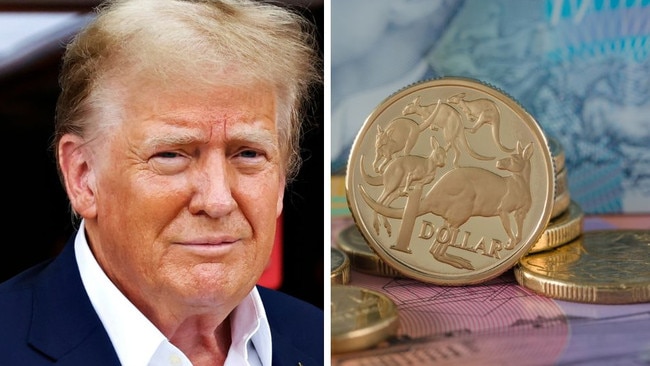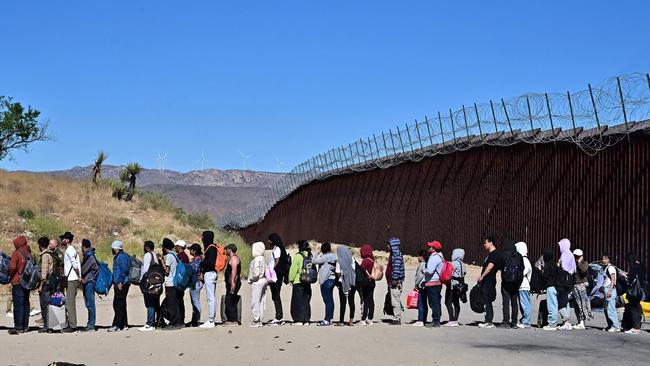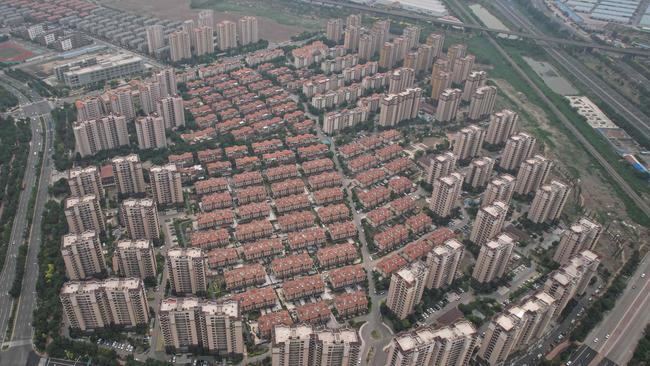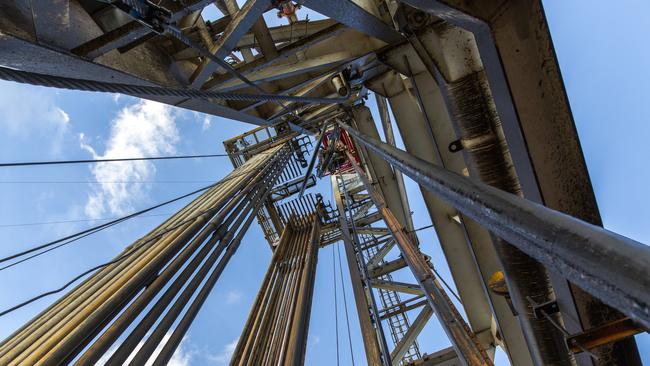Donald Trump’s impact on Australian economy
The second coming of Donald Trump may be more economically difficult for Australia than the first. However, it’s not all bad news.

Economy
Don't miss out on the headlines from Economy. Followed categories will be added to My News.
For Australia, the second coming of Donald Trump looms as more economically difficult than the first iteration.
Yet it is not all bad.
Trump 2.0 has a range of policies that will have direct effects on Australia.
Most of the impact looms from indirect channels via China.
The Trump 2.0 agenda is a more radical version of his first term.
It includes slashing unlawful immigration while boosting legal channels like international students; dropping a 60 per cent tariff bomb on Chinese exporters; extending tax cuts, and more extreme though unlikely outcomes, such as abolishing the Federal Reserve.
There is also likely to be less focus on climate change and the energy transition, though the economics of cheap renewables mean it is unlikely to slow much.

Direct effects
Trump 2.0 is proposing to restructure America’s economic borders. Illegal immigrants will be deported and borders will be strengthened.
To offset this for labour markets, Trump 2.0 is proposing to offer green cards to all one million per annum graduates of US colleges.
The US tertiary sector is superior in quality to the Australian, and the lure of working rights in the US will likely lift the number of students choosing the US over Australia.
This will be an excellent outcome for Australia, which has jumped the shark on international student numbers post-Covid, triggering a major rental crisis and big interest rate hikes.
Tax cuts in the US will be of marginal direct benefit to Australia, though they will pressure the Australian government to follow suit, as they did during Trump’s first tenure.
There is a risk that US tax cuts will trigger bond market angst, raising borrowing costs worldwide, but we would probably need to see inflation stay high for it to turn nasty and that is not where it is trending.


Indirect effects
It is the indirect impacts of Trump 2.0 that are of most concern to Australia.
The proposed 60 per cent tariffs on China loom as a serious blow to that economy.
As with the first round of tariffs, they are unlikely to benefit US trade much, but they will continue the shift of global supply chains out of China and into friendlier nations.
This is bad for Australia, in particular, for mining revenues.
China is still caught in a historic property bust. Beijing has offset this with a supply-side strategy of increasing exports.
Tariffs will be a serious blow to exports amid what is still a very difficult environment for property and local government infrastructure.
Chinese growth will slow even more, and Beijing’s options for traditional commodity-intensive stimulus will be limited.
The outlook for iron ore is already weak on weakening demand and strengthening supply so it hardly needs another hit.

Swings and roundabouts
There is some better news when it comes to the currency and energy markets.
Trump tariffs and immigration policies are likely to increase the strength of the US dollar, especially since China will react by letting CNY fall.
The AUD tends to follow CNY and commodity prices, which will also be under pressure.
There is also the possibility of a lower oil price to reduce inflation and lift Aussie household purchasing power as Trump supports a greater volume of oil drilling and withdraws American support for foreign wars in Ukraine and Israel.
He is also likely to end the Biden administration’s moratorium on LNG export plant approvals.
Although this will not have an immediate impact, it will add marginal pressure to global gas prices, which would benefit east coast Australian households immensely.
Pressuring the local gas cartel to lower prices helps end the compulsive gas and power bill shocks experienced in Australia since the election of the Albanese government.

David Llewellyn-Smith is Chief Strategist at the MB Fund and MB Super. David is the founding publisher and editor of MacroBusiness and was the founding publisher and global economy editor of The Diplomat, the Asia Pacific’s leading geopolitics and economics portal. He is the co-author of The Great Crash of 2008 with Ross Garnaut and was the editor of the second Garnaut Climate Change Review.
Originally published as Donald Trump’s impact on Australian economy




